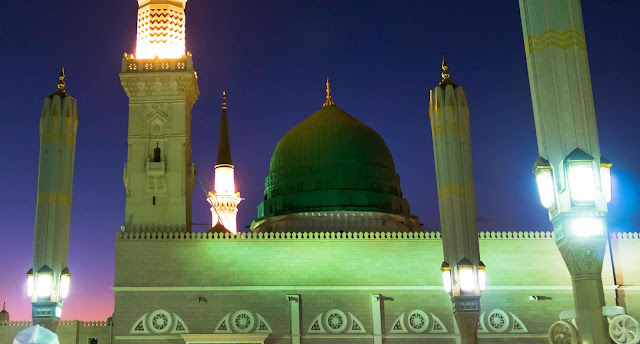The Rituals That are Essential for Performing Umrah
One of the Islamic pilgrimages undertaken by many
Muslims every year is Umrah, which is also called the 'lesser pilgrimage' or
the 'minor pilgrimage'. It can be performed at any time of the year and can be
completed within a few hours owing to the lesser number of rituals involved as
compared to the major pilgrimage of Hajj. Being one of the five pillars of
Islam, the major pilgrimage is an obligation for all the physically fit and
financially capable Muslims. The lesser pilgrimage is not obligatory, but it is
highly recommended since it is Prophet Muhammad's (peace be upon him) Sunnah.
The pilgrim must first enter the state of 'ihram' or
the 'pure state' to perform Umrah.
The pilgrim enters this state by putting on the prescribed garment at one of
the places designated for this purpose called Meeqat. Male pilgrims must wear seamless
garments that are not knotted or stitched, while women must not cover their
faces with a 'niqab' or 'burqa'. However, the female pilgrims must wear their 'dupatta'
or 'hijab'. All pilgrims must make sure that they refrain from using any scents
or scented materials on their clothes or body. They can use the unscented soap
for cleansing their bodies.
Other things that are strictly forbidden while in this
state is smoking, swearing, engaging in any form of sexual activity, trimming
of the hair or beard, or cutting the nails. The killing of animals, quarrelling
or fighting, use of cosmetics, and taking oaths are the other forbidden acts.
After having entered the state of ihram, the pilgrim pronounces the Niyyah and
recites the Talbiyah before entering Makkah and proceeding towards Masjid
al-Haram. While at this holy mosque, the pilgrims perform Tawaf, which is a
ritual involving circumambulation of the holy Kaabah seven times anticlockwise.
These rounds begin from the Kaabah's corner and end at the same place.
Sa'ee is performed after the completion of Tawaf. This
ritual is based on an event in the life of Prophet Ibrahim (peace be upon him)
when his second wife, Hajar (May Allah be pleased with her) looked around
frantically for their infant son, Prophet Ismail (peace be upon him). It was
then that The Almighty Allah sent archangel Jibreel (A.S) to give her
instructions to lift her son. When she did, water was sprouting from the spot
where the infant prophet had hit the ground using his feet. This source of
water is called the 'Well of Zamzam' today. In the Sa'ee ritual, the pilgrims
walk to and fro seven times between the mountains of Safa and Marwah.
Halq or Taqsir is the ritual performed after
completing the other two rituals. Taqsir is performed on female pilgrims, which
involves cutting a fingertip's length or about an inch from the end of their
hair. In case of male pilgrims, the hair is shaved off entirely from their
heads while performing the Halq ritual. These three rituals complete the lesser
pilgrimage. However, many of the pilgrims drink water from the Well of Zamzam
before going out of their state of Ihram.

Comments
Post a Comment